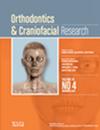Digital Innovations in Orthognathic Surgery: A Systematic Review of Virtual Surgical Planning, Digital Transfer, and Conventional Model Surgery
Abstract
Objectives
Orthognathic surgery has evolved due to the use of virtual surgical planning (VSP) and digital model surgery, which are technological advancements replacing conventional approaches with accurate personalised digital models made from computed tomography (CT) or magnetic resonance imaging (MRI) scans. Their integration has enhanced surgical efficiency, patient satisfaction and communication among surgeons and patients, while some challenges such as cybersecurity issues and the requirement for information technology backup have also been noted in hospitals.
Materials and Methods
From January 2013 to October 2024, this systematic review aimed at orthognathic surgery virtual planning; it was carried out on the basis of a digital library with 437 works from PubMed, Embase, Cochrane, Web of Science and Scopus searched through an initial selection of specific keywords. The final step is filtering out irrelevant studies through scrutiny, resulting in 25 original interventional studies that met inclusion criteria for quality control purposes via bias analysis.
Results
In relation to the future of orthognathic surgery, it can be advanced by improving VSP, digital transfer techniques and conventional model surgery with technical innovations that need to meet the challenges. The integration of Artificial Intelligence (AI) into VSP can be an opportunity for its development in the sphere of accuracy and visualisation during surgery with augmented reality (AR) utilisation. Among them are the real-time data integration offered by digital transfer techniques, but they are hindered in cost and standardisation. On the other hand, conventional model surgery may revolutionise with three-dimensional (3D) printing; however, there is a long way to go for conventional model surgery to address time constraints as well as ecological concerns. Compatibility issues, training needs and ethical considerations represent three major obstacles that must be tackled successfully so that surgery will have a bright future.
Conclusion
Case complexity and patient preferences are important factors that should be considered before making a decision about orthognathic surgery. VSP offers precision for complicated cases. Real-time guidance can be achieved using digital transfer techniques, whereas traditional model surgery provides a tactile, hands-on experience. Analysing digital innovations jointly will enhance orthognathic patient care and education while improving patient safety.

 求助内容:
求助内容: 应助结果提醒方式:
应助结果提醒方式:


